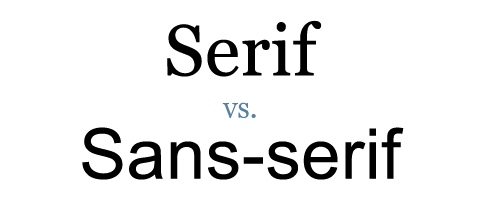
We should start off this post about eLearning text by saying that we generally prefer courses that are visual and interactive versus large walls of text. That said, there are certain cases where you just can’t get around presenting information to learners in a text format.
For this reason, research into how people read online can shed some important insight into designing eLearning.
Using this data, we can ensure text in courses is placed correctly so that the reader’s eye can quickly and easily move through material.
So what do these eye-tracking studies tell us about how people read online? Let’s take a look.
F-shaped Pattern
Jakob Nielsen conducted an eye-tracking study that examined how readers looked at text in an online setting. He found that readers favored the left hand side of a screen, and scanned through text in an F-shaped pattern. It makes sense, as we’re trained to read from left to right.
![]() How to use it: With this data in mind, we can be sure to move important headings, facts, and statistics over to the left side in eLearning so they catch the reader’s eye.
How to use it: With this data in mind, we can be sure to move important headings, facts, and statistics over to the left side in eLearning so they catch the reader’s eye.
Quick Scanning, Slow Reading
The study also found that online readers don’t look at each word as they read online—they quickly scan over sentences instead. But when they do take the time to slow down to read, they read about 25% slower on a computer than in comparison to print materials.
How to use it: You can leverage this data to write in a way that compliments this writing style by chunking data, using bullet points, breaking long paragraphs into 2-3 sentences, and using simple, concise language.
Whitespace Improves Reading Ability
Content that can breathe (thanks to empty whitespace) is easier to read, comprehend, and remember. Research showed that effective whitespace increased comprehension by as much as 20%.
How to use it: Don’t overload pages with text. Use open space to let information stand out against a clutter-free environment.
Web-Based Fonts
Sans-serif fonts (the fonts without serifs, or decorative strokes on letters) are easier for computer-based reading. Be sure to use these fonts at an appropriate size to make content easy on your reader’s eyes.

How to use it: Fonts like Arial, Helvetica and Veranda are read more quickly thanks to their easy legibility.
Visuals That Compliment Text
Simple graphics that reinforce text help speed up understanding. We know that the brain can process visual data 60% faster than text, so any time you can tie in visuals like infographics, charts, or simple illustrations, you make it easier for readers to understand the material.
How to use it: Illustrate complex concepts with simple images and graphics.
Online Reading Habits and Smart eLearning
Using this research, your next course will help learners read through material in the easiest possible way. With them, you remove the stress of eyestrain and make it easy for trainees to read at their own pace.
Like this post? Subscribe to our blog.
